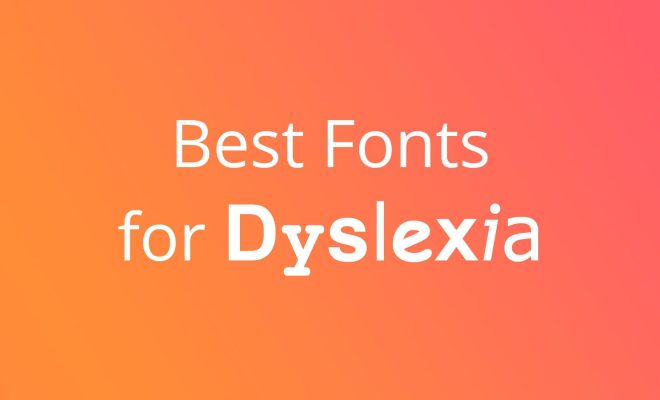Best Fonts for Dyslexia and Why They Work

When it comes to selecting fonts for individuals with dyslexia, it is important to consider readability and legibility. Certain fonts have been specifically designed or proven to be more accessible and easier to read for people with dyslexia. Here are some of the best fonts for dyslexia and why they work:
1. OpenDyslexic:
OpenDyslexic is a widely recognized font specifically designed for individuals with dyslexia. It features weighted bottoms, which helps to provide a visual anchor and prevent letters from flipping or rotating. The unique design of this font aims to decrease reading errors and improve readability.
2. Dyslexie:
Dyslexie is another font that has gained popularity for its dyslexia-friendly features. Created by designer Christian Boer, Dyslexie incorporates slightly elongated letterforms and varying letter heights to promote visual distinction between individual letters. The font also emphasizes letter spacing and offers a bolder base, making it easier for dyslexic readers to identify and differentiate letters.
3. Arial:
While Arial is not specifically designed for dyslexic readers, it is often considered an accessible alternative due to its simplicity and familiarity. Arial is a sans-serif font that offers clear and well-defined letterforms, which can enhance readability for individuals with dyslexia.
4. Comic Sans:
Despite the ongoing debate about its appropriateness in certain contexts, Comic Sans has been found to be helpful for some individuals with dyslexia. Its irregular letter shapes and exaggerated serifs can make it easier for dyslexic readers to recognize and distinguish letters.
5. Sassoon Primary:
Sassoon Primary is a dyslexia-friendly font commonly used in educational settings. It features a slightly slanted baseline, clear letterforms, and distinct differences between uppercase and lowercase letters. These characteristics contribute to improved letter recognition and reading fluency for individuals with dyslexia.
It is important to note that font preference and effectiveness can vary among individuals with dyslexia. While these fonts have shown positive results for many, personal preferences and individual needs should be taken into consideration when choosing fonts for dyslexic readers. Consulting with professionals or conducting user tests may help identify the most suitable fonts for specific individuals.
In summary, selecting appropriate fonts for dyslexia can significantly improve reading experiences for individuals with this learning difference. OpenDyslexic, Dyslexie, Arial, Comic Sans, and Sassoon Primary are among the fonts recognized for their dyslexia-friendly features. However, it is important to remember that font choice should be personalized and based on individual needs and preferences.






